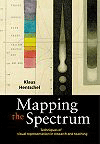A book review by Tim Longville, in Hortus, 23(2), summer 2009, pp. 113-8
This book, unfussily but handsomely designed and produced (good paper, print given room to breathe, a central section of colour illustrations on art paper, sharply printed at a good size), is not about either gardens or gardening. But it is a book about plants and people and how the latter have used the former – for pleasure, profit and ‘psychological relief’ (including that provided by religious symbolism) – and therefore of considerable interest to any curious gardener. Its author is a retired professor of chemistry who has lived, taught and engaged in research all over the world, including in France, Britain, Belgium, Brazil, America and New Zealand. So, unsurprisingly, there is much in his pages about the biology and chemistry of his chosen group of plants – a group which of course includes all the many varieties of oranges, lemons, grapefruits and limes but also such relative oddities as calamandrins, kumquats and uglis. (At the end of one of the more formidable of those episodes of chemical analysis, he adds with characteristic charm – and the equally characteristic gentle teacher-ly hint that you could do better if you tried -, ‘You are forgiven if you skipped the last paragraph.’ Not all of the Professor’s scientific detail is formidable, though. Some is simply, ah, fascinating. For example, if I understand him correctly, the effects of Viagra are apparently increased by a regular intake of grapefruit, since that fruit contains chemicals [bergapten and bergamotin] which deactivate an enzyme in the small intestine which otherwise damages such ‘medications’ before they get into the bloodstream. Cue a rush on grapefruit once the news gets out?)

